Can you name 5 animals that start with N? No? That’s okay! It’s indeed a challenging task to find animals that start with the letter N, but we’re here to help you!
The animal kingdom is the most diverse aspect of our world. And with so many creatures, we had to put together a list of animals beginning with N.
In today’s article, you’ll learn a bunch of interesting facts about these animals that begin with N. Whether you’re looking this up to finish homework, homeschool your kids, or you’re just curious, you’re in the right place.
Have we missed your favorite animal that starts with the letter N? Drop us a comment, and we will add it to this list.
Animals That Start With N
Here are some names of animals that begin with the letter N.
Northern Cassowary
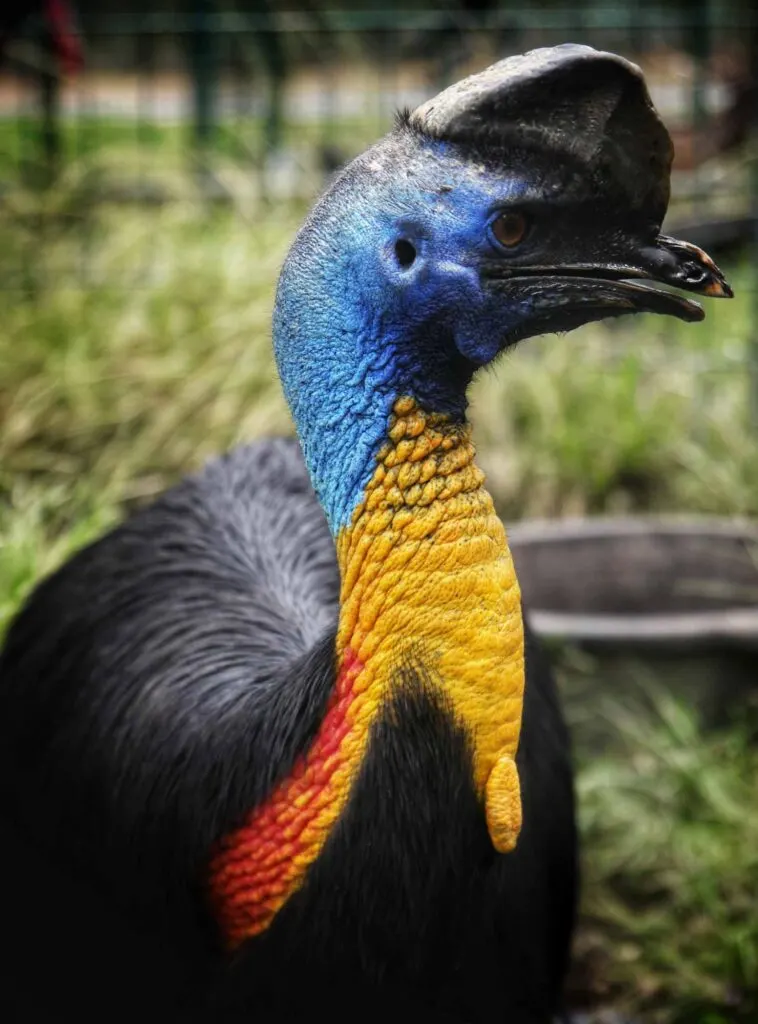
A native of northern New Guinea, northern cassowaries are among the biggest birds in the world. Not only that, but these are flightless birds.
They might not fly, but they can jump 6 ft up in the air, and they can run 31 mph.
While they look like turkeys with their black body, long blue neck, and head, they’re actually dinosaur descendants.
Narwhal
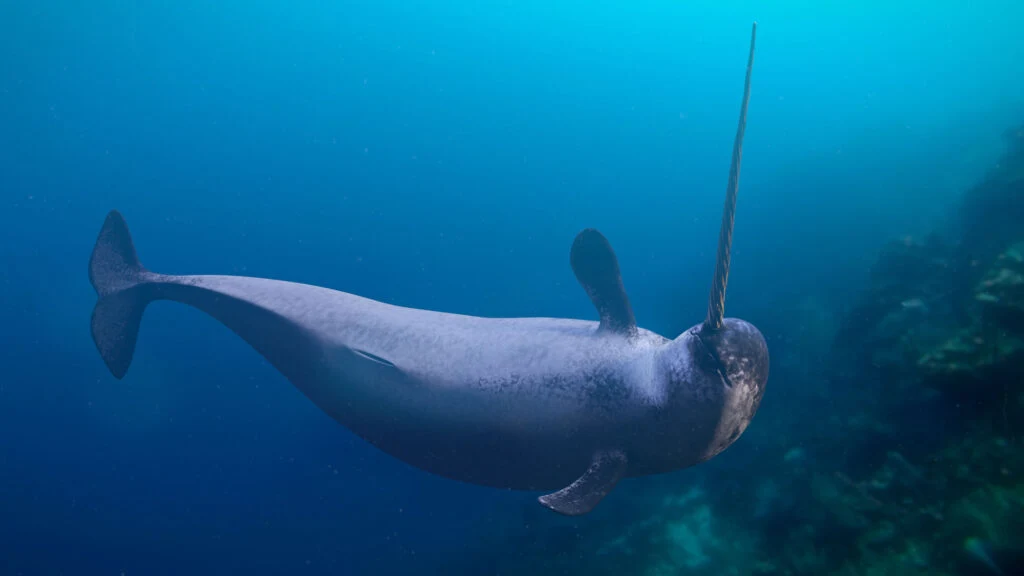
Dwellers of the arctic waters surrounding Canada, Russia, and Greenland, narwhals are whales with an estimated population of 800,000.
Their tusk, which is a canine tooth, in reality, can grow up to about 10 feet. This elongated tooth grows on the animal’s top lip.
Narwhals can dive as deep as 4,500 ft and stay underwater for 25 minutes at a time.
Nile Crocodile
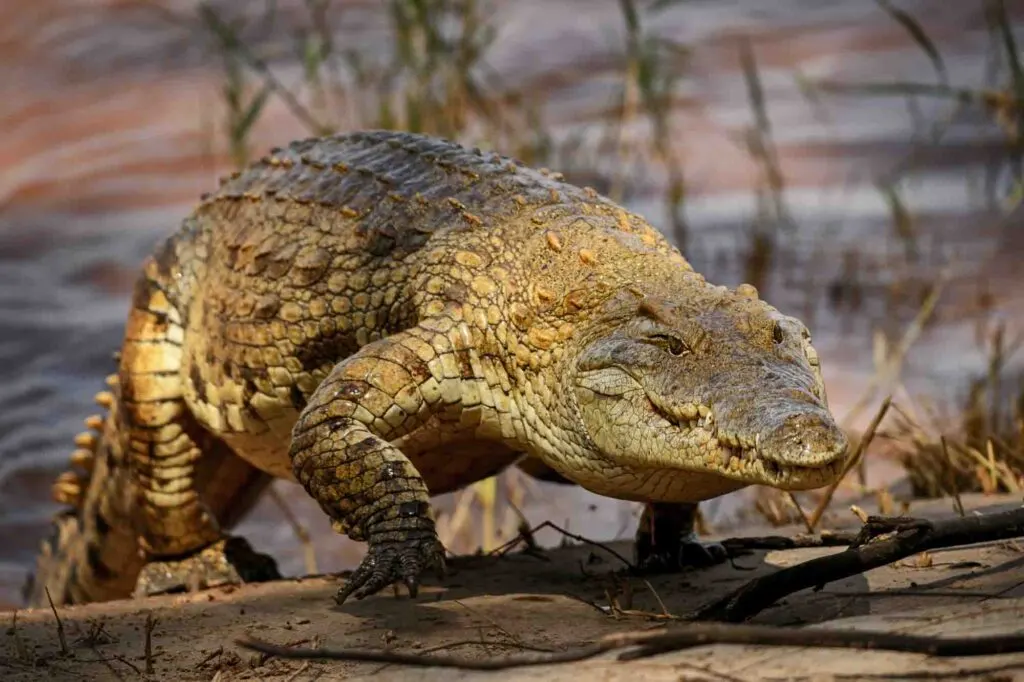
Found in the freshwater of sub-Saharan Africa, you can guess how much they frequent the Nile river to get the name Nile crocodile.
Namely, they’re in 26 countries across Africa. Nile crocodiles can reach 22 mph when swimming and are responsible for at least 200 human deaths each year, making them one of the most dangerous animals in Africa.
Numbat
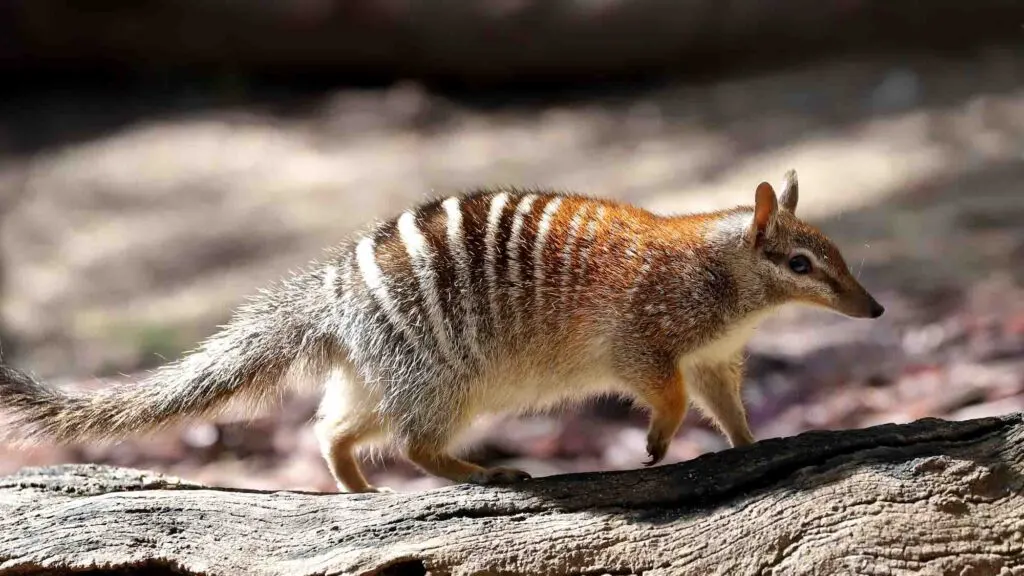
An insect devouring marsupial, numbats used to run amok in southern Australia. Now, they’re small colony inhabitants of western Australia.
In a day, they’re helpful in exterminating 20,000 termites. Numbats’ sharp sense of smell is useful in sussing them out from the ground.
Nyala
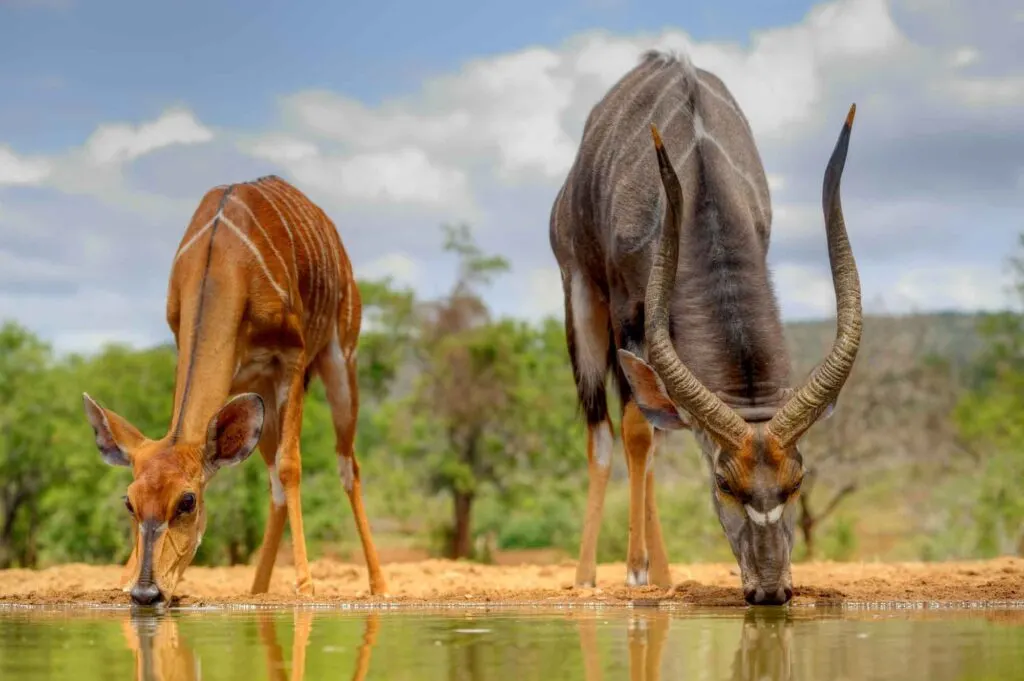
Antelopes from South Africa, nyalas are about 6 ft in length. They have a high-pitched warning tone that sounds like a dog’s bark.
These beautiful antelope use this special ability to warn their friends, monkey, and baboons during danger. This is to return the favor from baboons and monkeys who drop fruits for nyalas from high trees.
Northern Tiger Cat
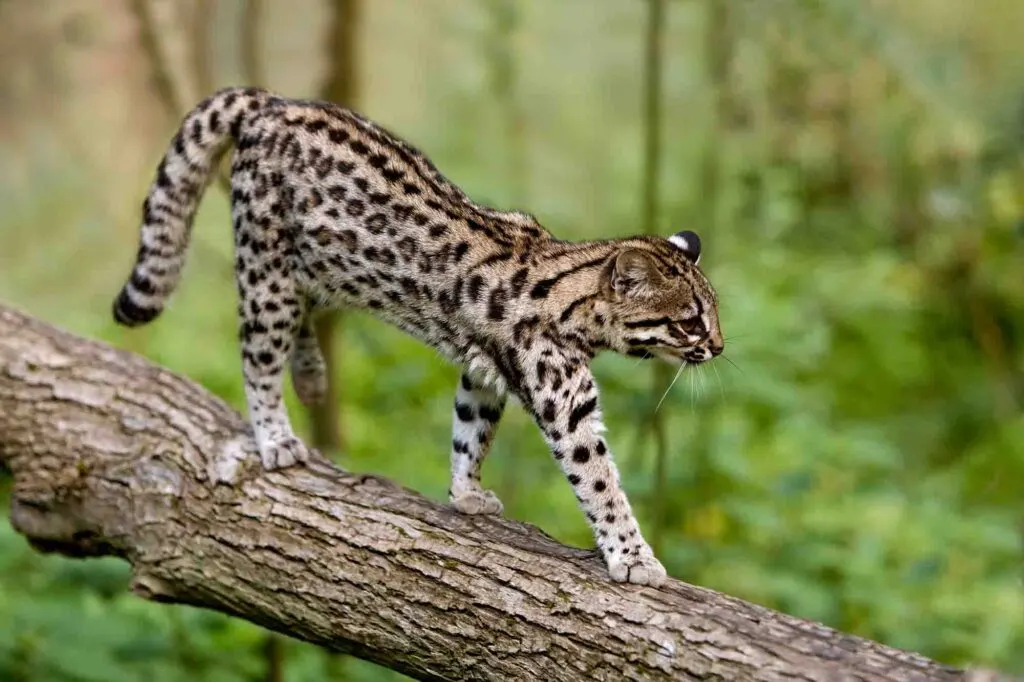
Commonly known as oncilla, they’re spotted wild cats ranging from Central America to central Brazil in South America.
They’re dainty creatures, with a small, slightly oval head and white liner over their eyes. They’re barely 5.5 lb, though some might be 6 lb or as small as 4 lb.
Notodoris Minor Nudibranch
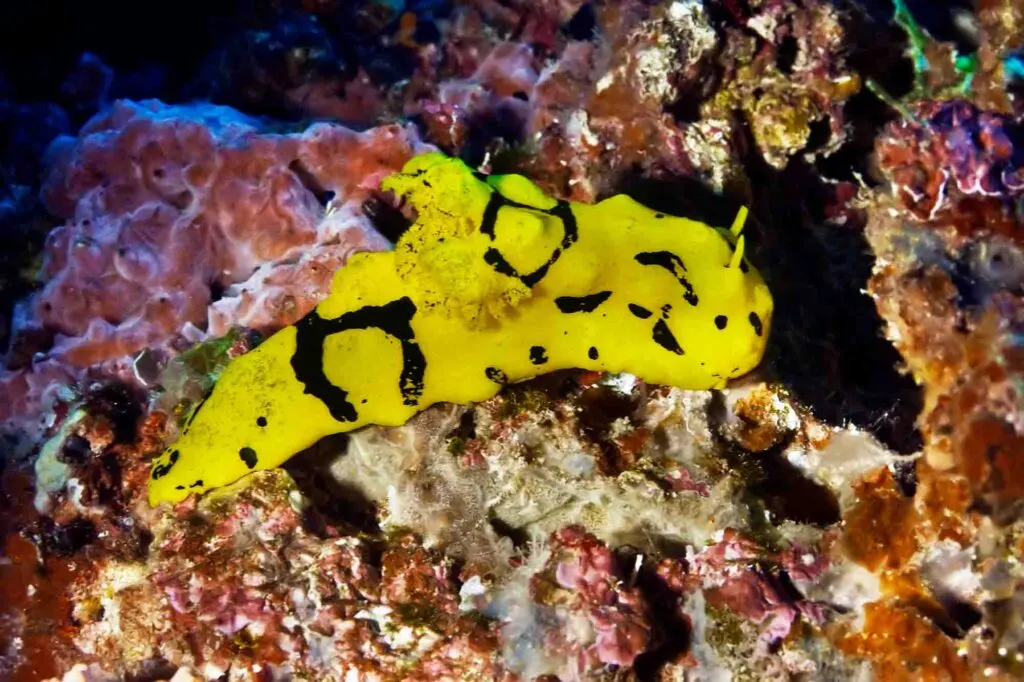
Slugs are a curious thing, especially if they’re sea slugs like the notodoris minors.
They’re green in color with black, thin patches dotting their body. They can grow as big as 5.5 inches in length, which is a big deal for sea slugs.
Northern Right Whale Dolphin
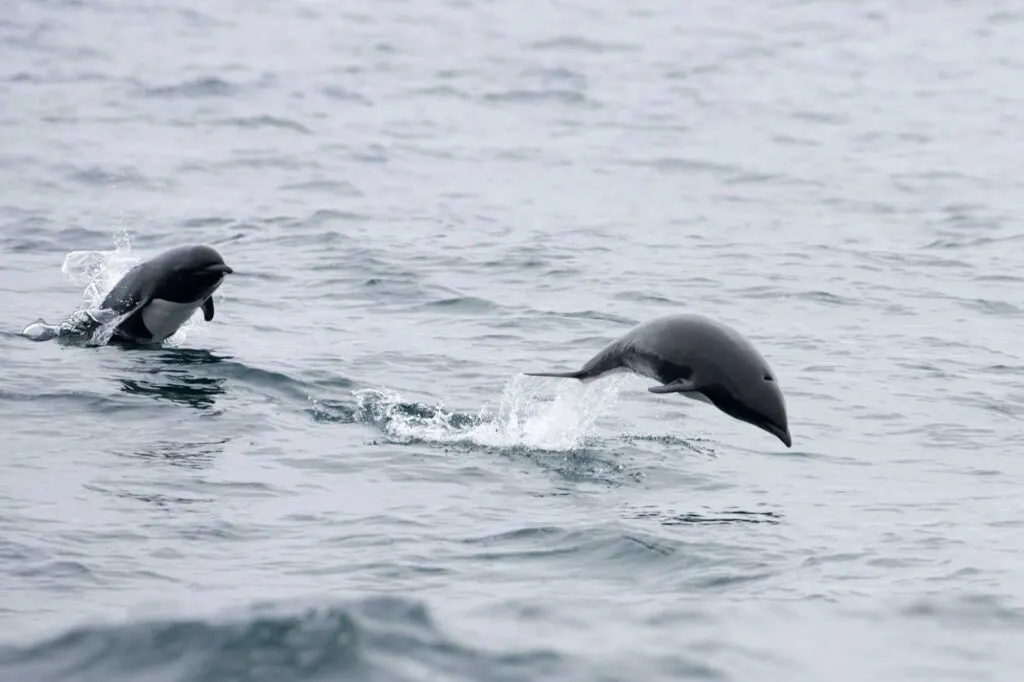
Northern right whale dolphins are unique in that they’re the only ones with the dorsal fin missing among dolphins in the North Pacific.
They’re the ultimate slim-fit, tuxedo color-wearing dolphins. It’s a given that they would be excellent swimmers, but they also whoop up 20 ft into the air with ease.
Nashville Warbler
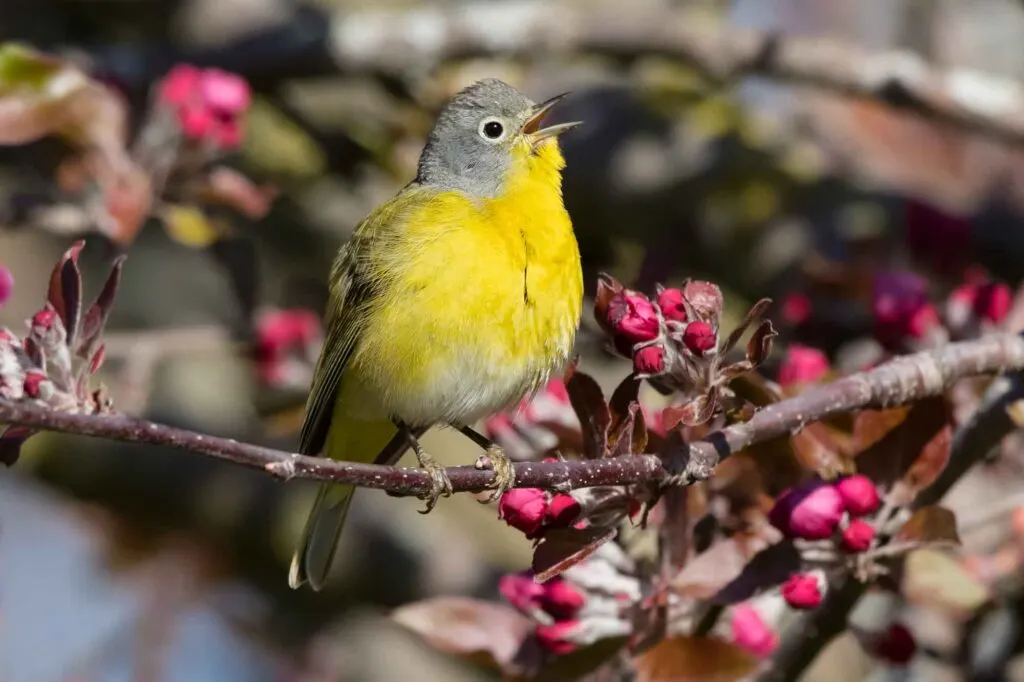
Nashville warblers don’t actually frequent Nashville all that much.
They appear there during migration but are nowhere close during the breeding season.
Nashville was the first place Alexander Wilson – who was a traveler and writer- saw this species, thus their name.
Northern Saw-whet Owl
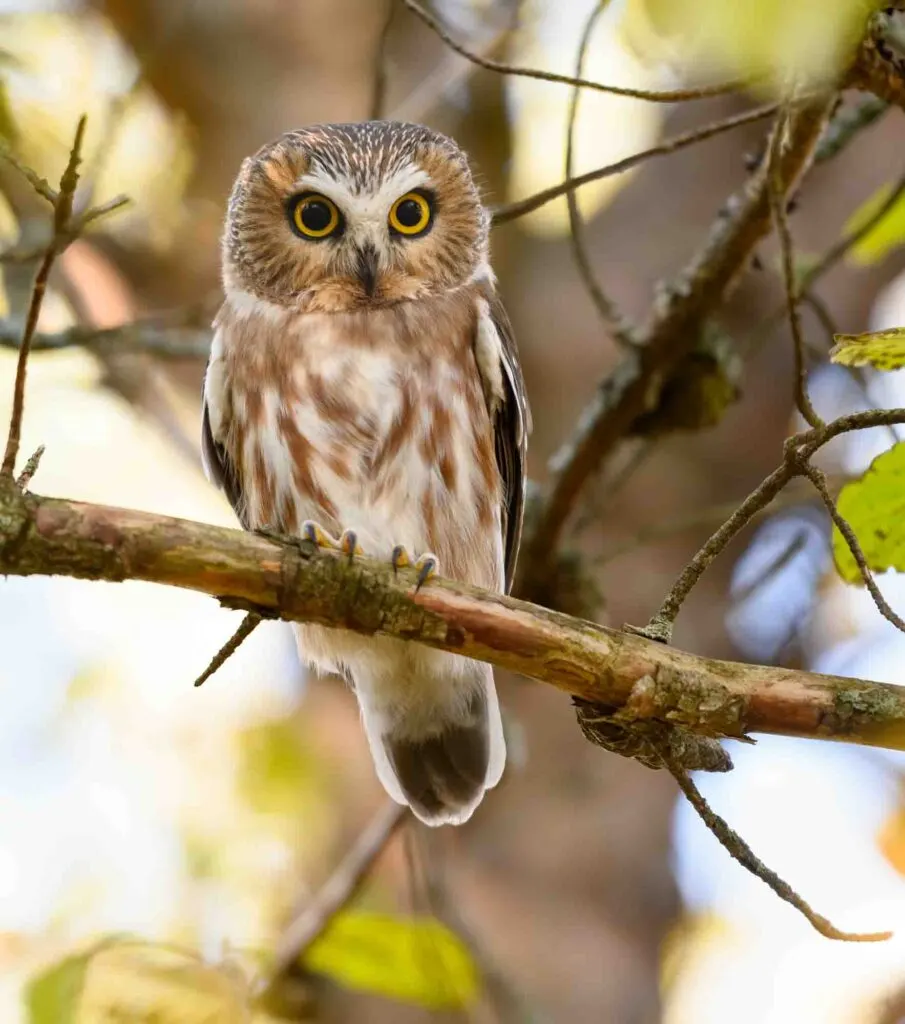
The owls are in the list of animals that start with N because they’re owls of North America.
They’re among the smallest owls in the world. Still, it doesn’t stop them from being their fierce self, hunting down mice and mammals.
Northern Plains Gray Langur
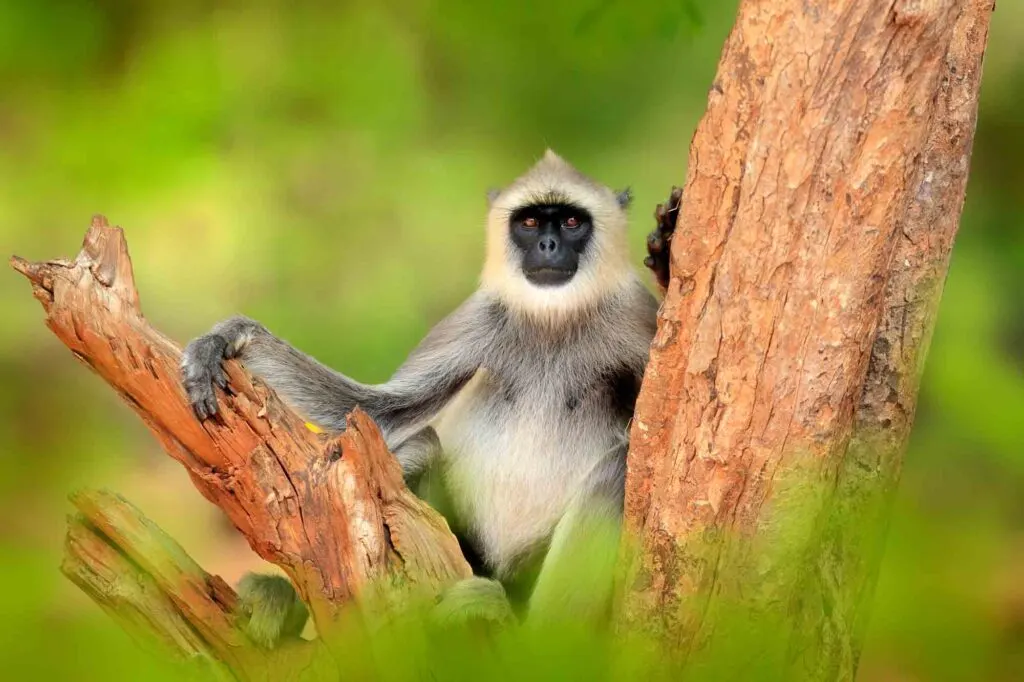
Better known as Hanuman langur, they’re found all over India, around Tapti and Krishna rivers and in the southern Himalayas.
They have a grey body and a completely dark face. Excluding their size, they can be 30 inches long alone. Their tail length can touch 44 inches with ease.
Noisy Miner
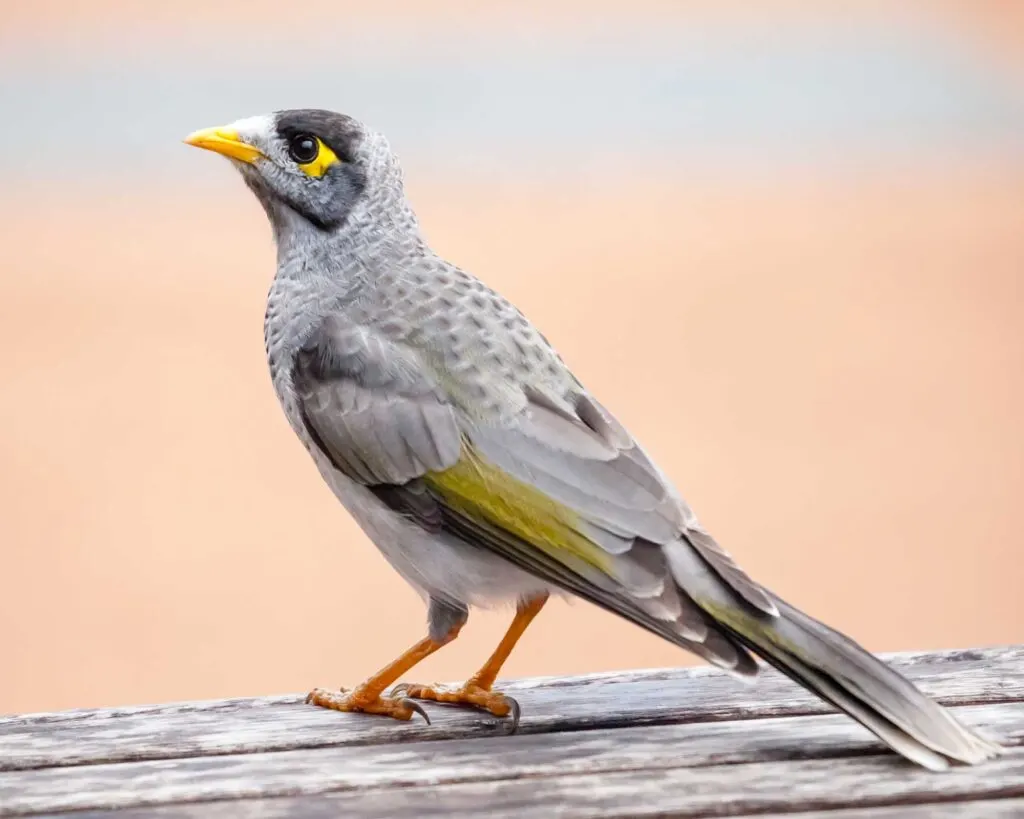
Spotted around east and southwestern Australia, noisy miners are from the honeyeater family.
They’re a rowdy bunch, which is why they are lovingly named so. They have a yellow bill, a patch of yellow behind the eyes, and some on their wings.
North American River Otter
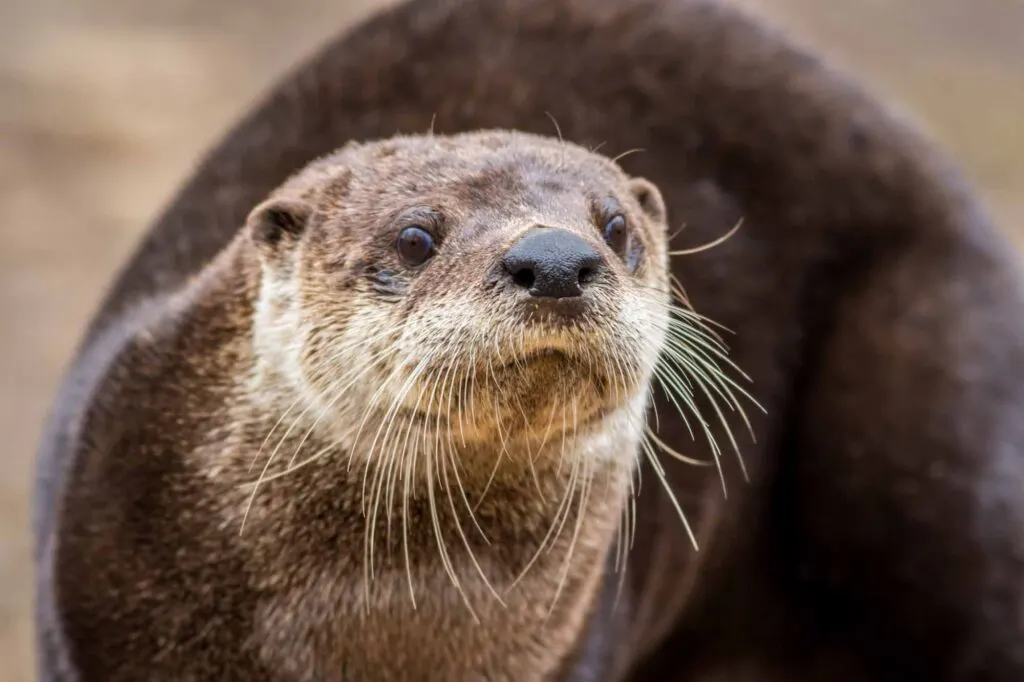
Their name is pretty much a direct explanation of their habits. They’re otters who only live along the watersides of North America.
They mostly spend their time on land. However, once they do go into the water, they can easily stay under for about 8 minutes.
New Holland Honeyeater
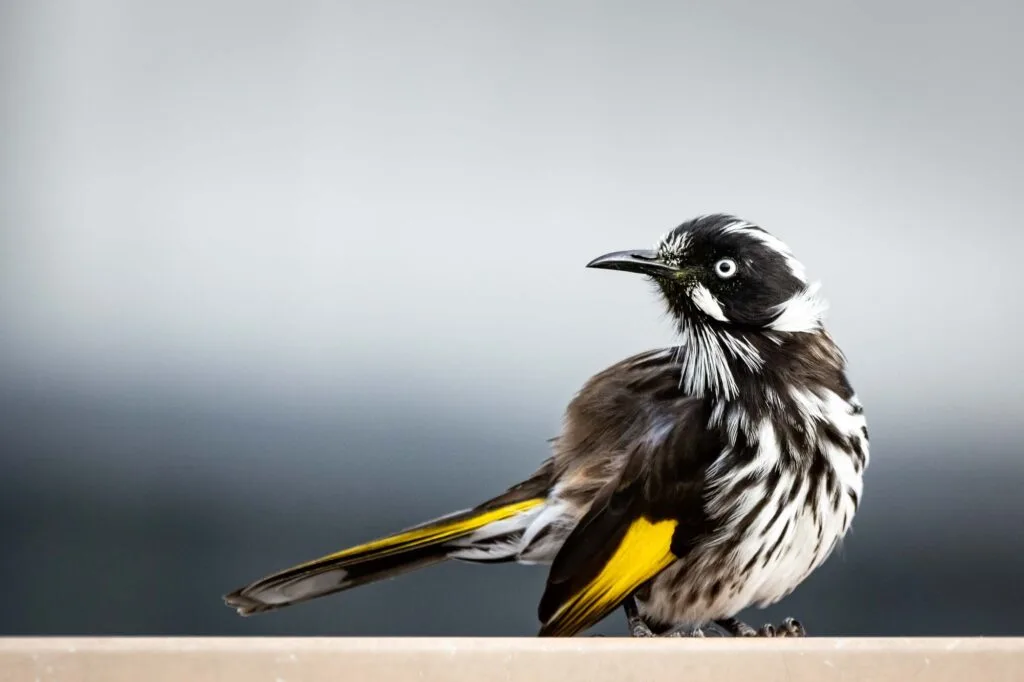
New Holland honeyeater is a bird native to South Australia. In fact, they’re among the birds initially researched and scientifically studied in Australia.
They don’t actually consume honey but are seen gulping nectar deliciously. They’re white on the base with a black coating all over their body and a patch of yellow on the wings and tail.
Northern Golden Orb Weaver
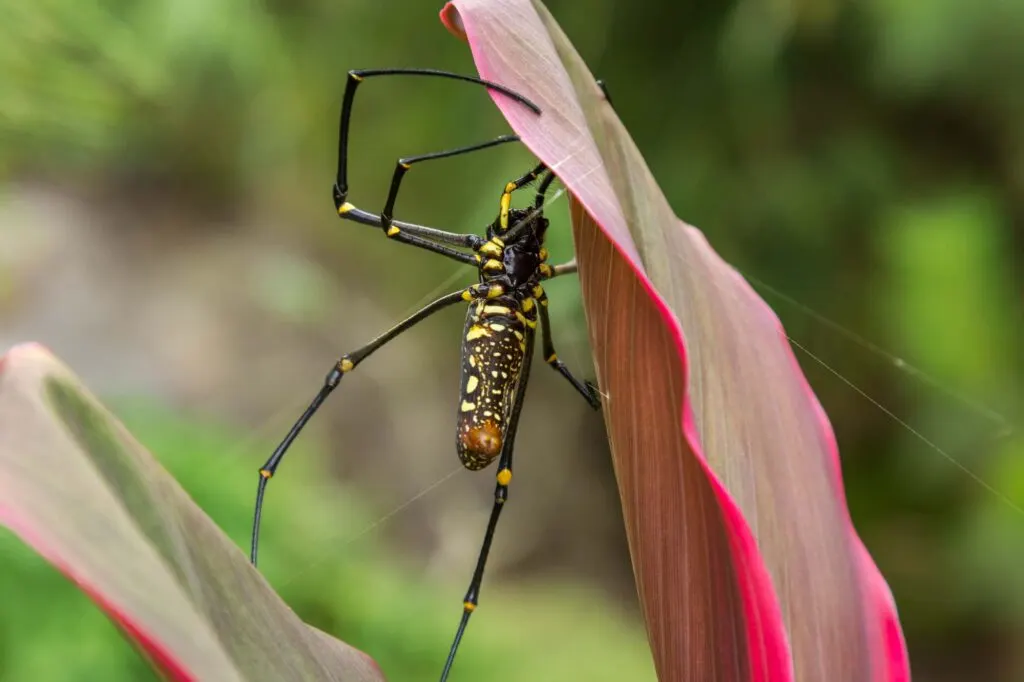
Residents of east and southeast Asia, northern golden orb weavers are golden orb-web spiders.
The silky webs they built appear yellow under the sunlight, which is why they’re called golden weavers. The female spiders are double the size of male spiders in this species.
Northern Pygmy-Owl
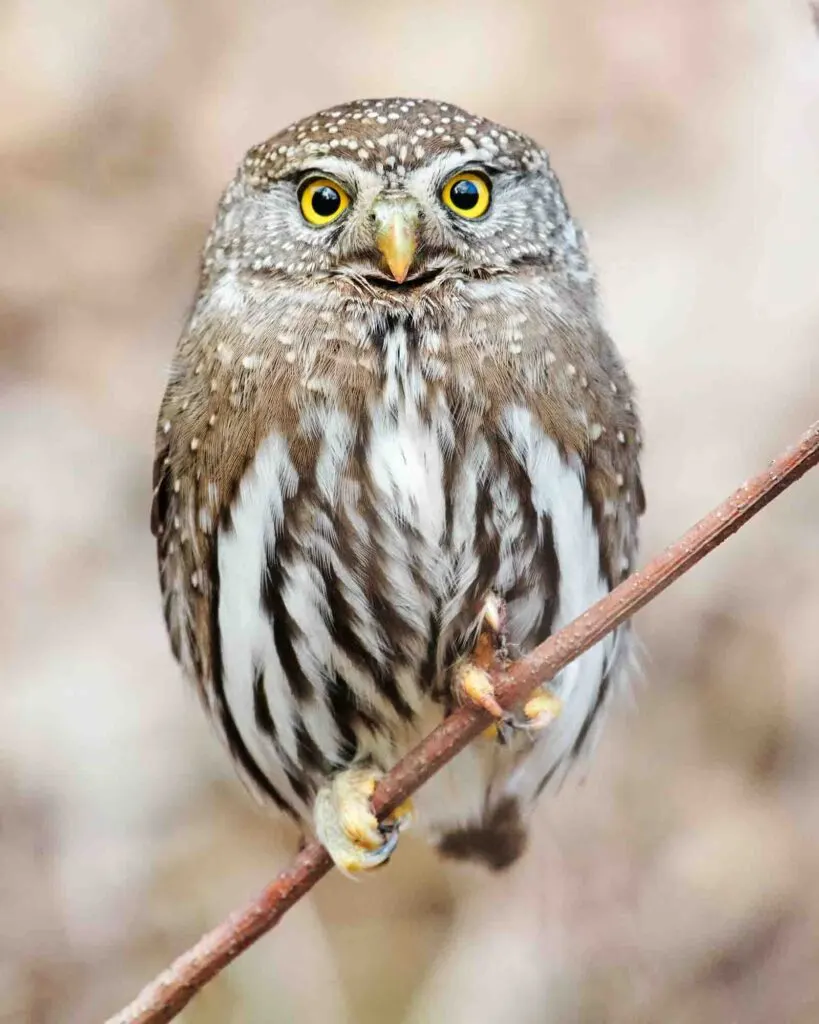
The tufts on the side of the northern pygmy owls remain flat until there is a predator in sight.
They’re small on the owl scale, with a wingspan of 15 inches and a size of 7 inches. In North America, they’re the fourth smallest owls.
Nine-Banded Armadillo
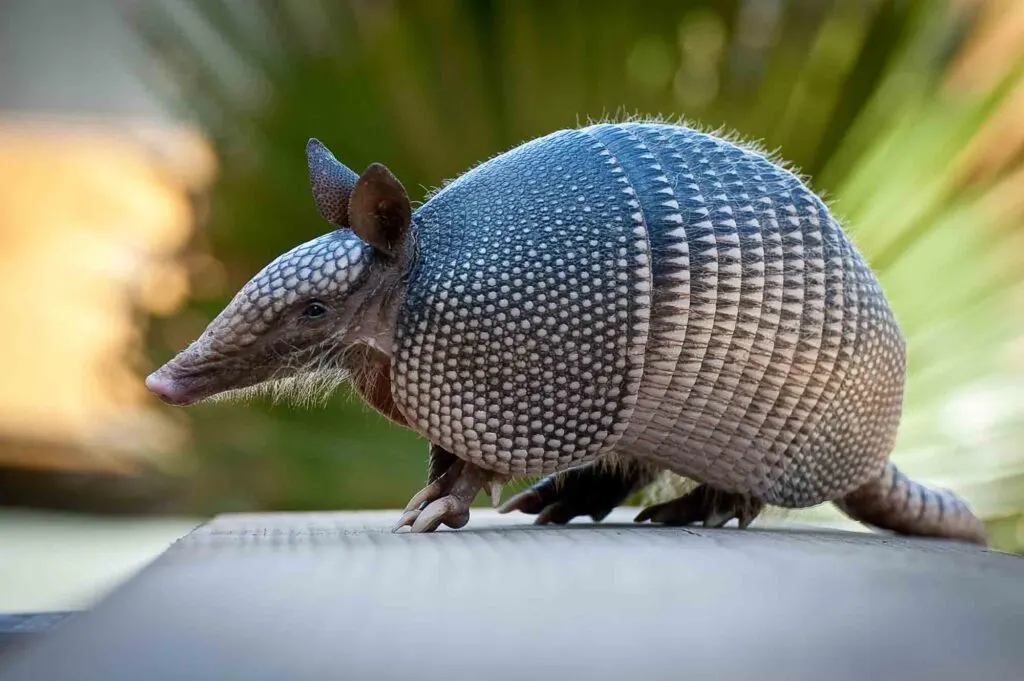
A mammal found in North, Central, and South America, the nine-banded armadillos are most easily spotted.
They do have exactly nine brands in the middle of their back. During birth, they’re almost always born as four. They can jump five feet up in the air if they’re surprised.
Naso Elegans
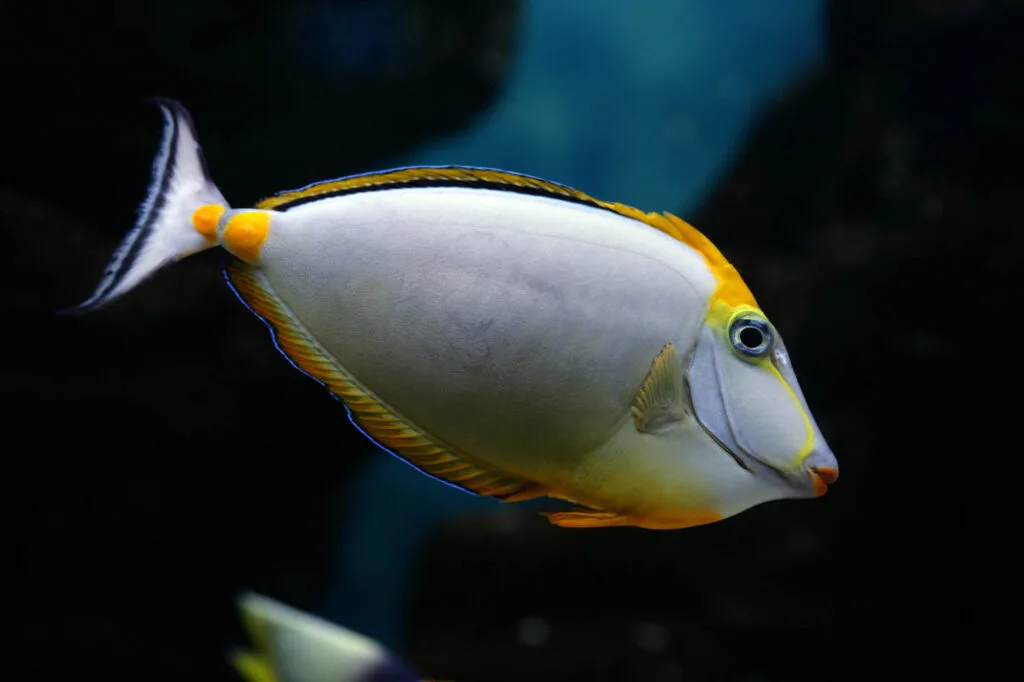
Coral reef inhabitants of the Indian Ocean, Naso elegans are blue fishes with yellow fins.
The blue on their face is darker than the blue on their body, with the tail being a neat triangle of white with a stripe of black at the bottom.
They mostly eat algae or other greenish food found at the sea bottom.
Nelson’s Sparrow
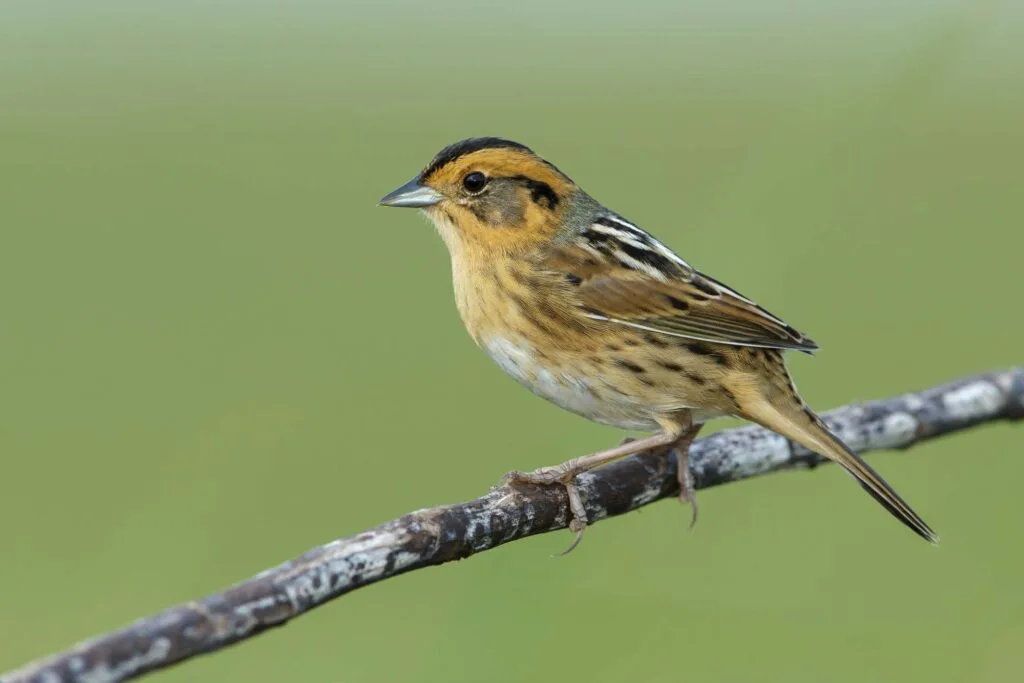
Among the animals that start with N, Nelson’s sparrows are a splash of color in the brown family of birds.
Still brown, the face is a mixture of yellow and orange. There’s a splash of yellow on the chest and a bit of gray framing the cheeks.
Northern White-Faced Owl
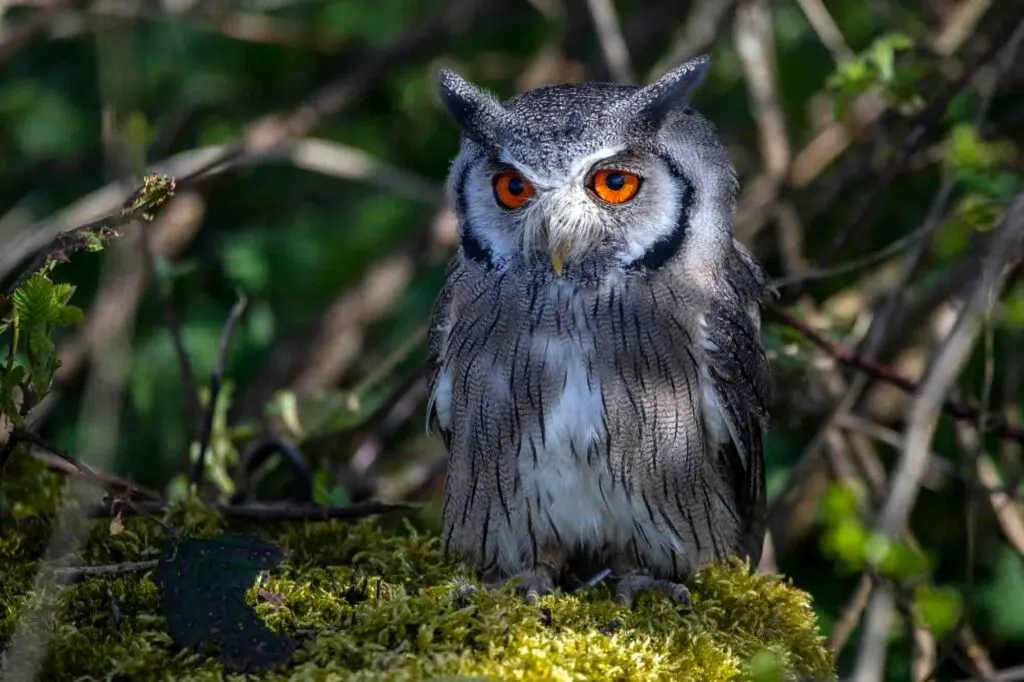
While they do have a white face, The northern white-faced owls also have grey-brown plumes at the bottom and top of their head.
They’re inhabitants of Central and North Africa and happen to be 9 inches in length at most. The male owls have a song that sounds like po-prooh.
Neotropical Otter
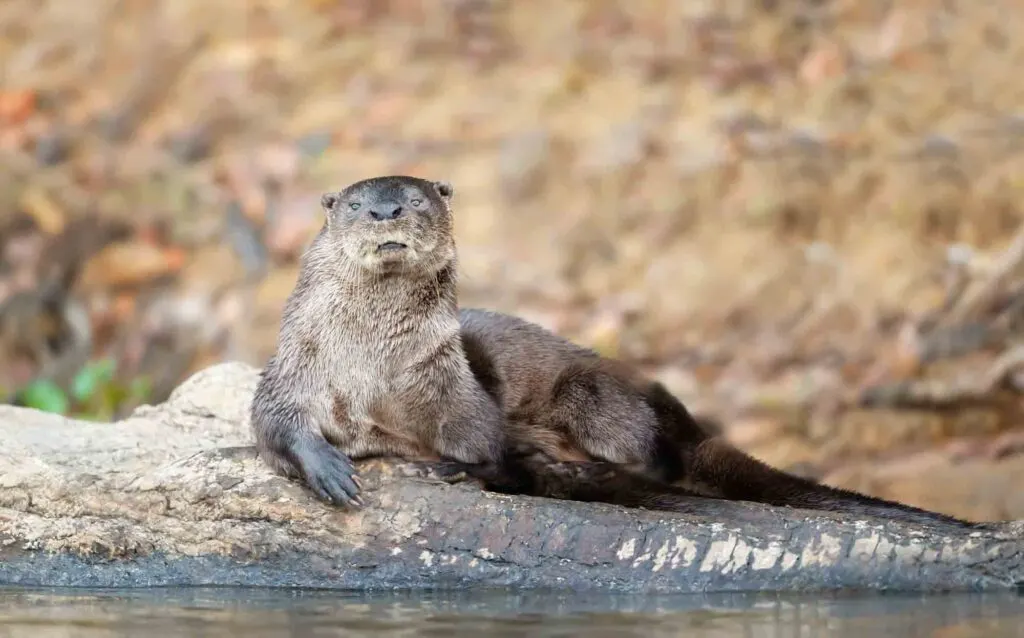
Neotropical otters weigh about 25 pounds. This makes the same size as medium-sized dogs. In length, they can grow about 3 ft.
However, most of it is their tail rather than their full body. They’re on the shy side and tend to stay out of sight.
Netherland Dwarf Rabbit
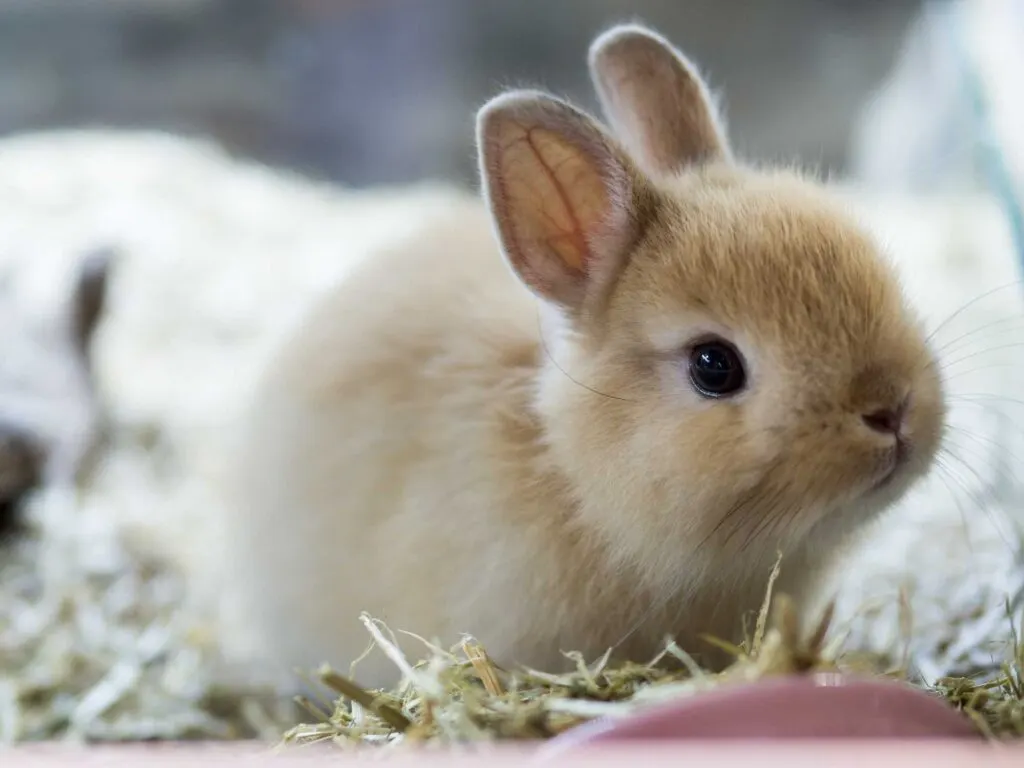
One of the most popular pet rabbits, you can attribute their popularity to their short size.
Barely weighing 2.5 pounds, they’re about 1.6 ft at their tallest. They’re true dwarfs, with the dwarf gene passing from one to another.
New Zealand Falcon
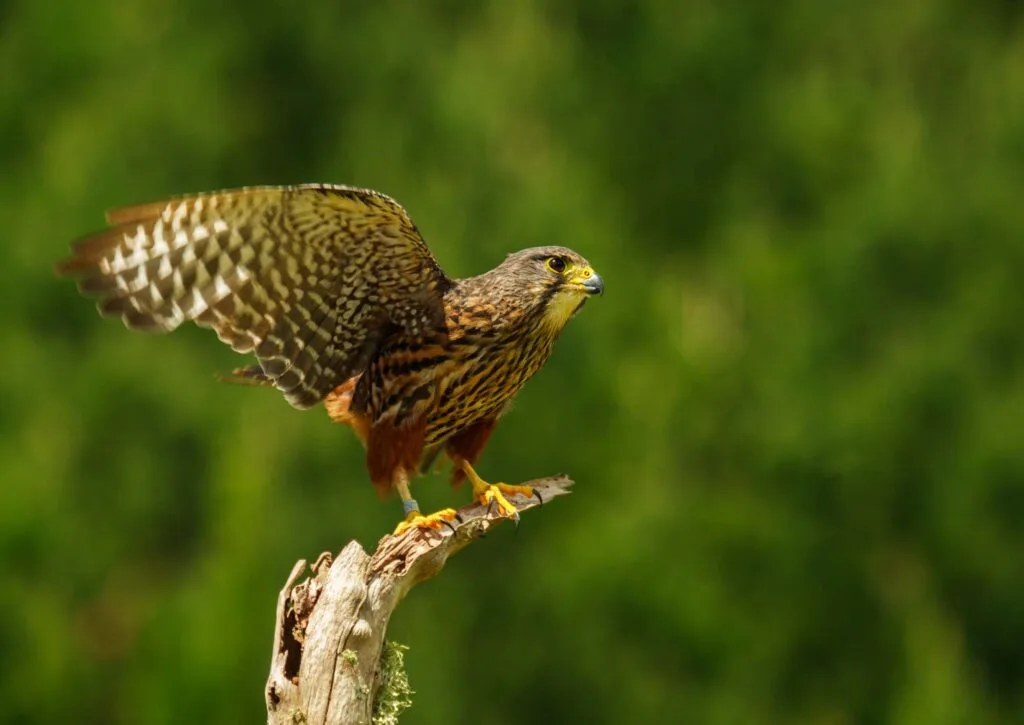
The only type of falcon to exist in New Zealand, it’s a shame they’re a threatened birds-of-prey, only existing in 5,000 breeding pairs at most.
They can fly 62 mph and have a good track record of discapacitating prey larger than them.
Northern Pike
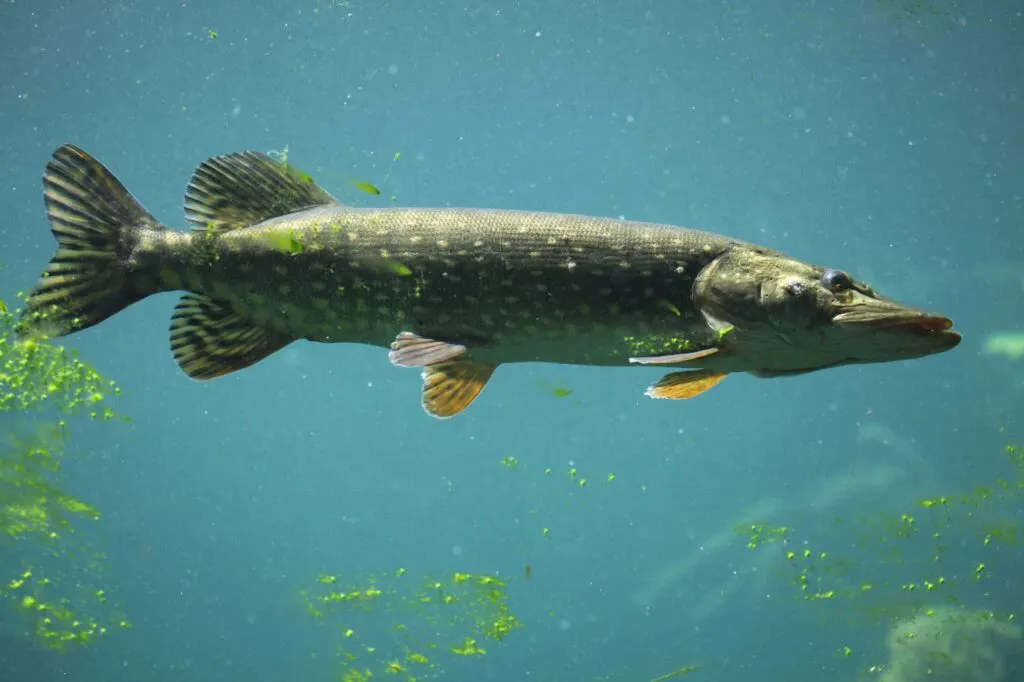
Northern Pikes are freshwater fish found in the Northern Hemisphere. They’re large predators with sharp teeth, though their tendency to bite baits makes fishermen happy.
In comparison to their size, their swimming speed of 10 mph is undoubtedly impressive. They’re good at camouflage and unmoving when required.
Northern Crested Newt
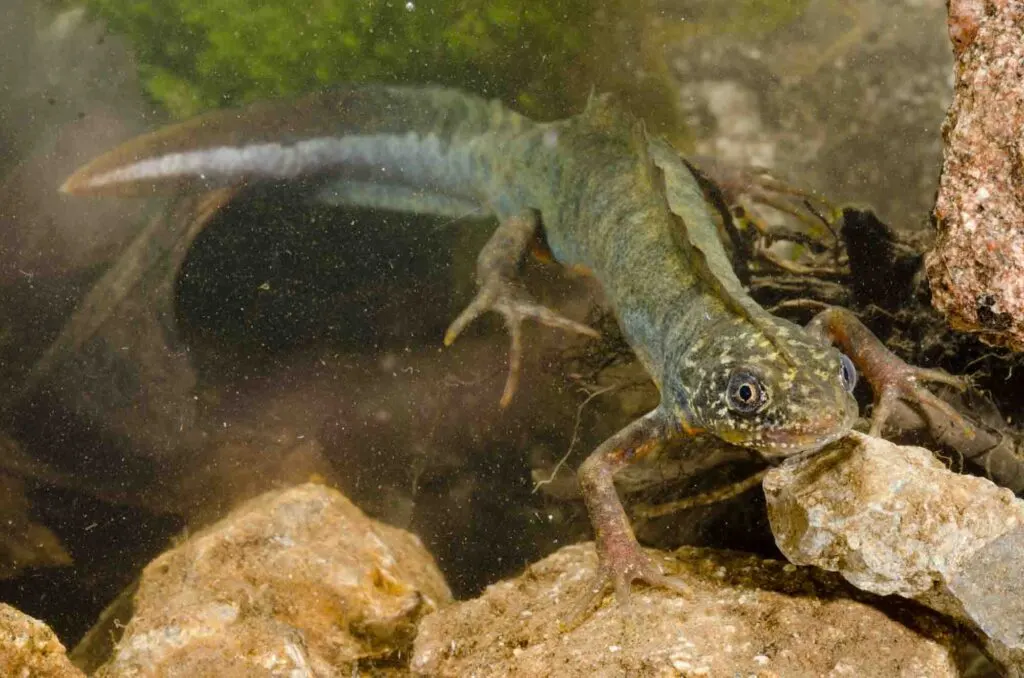
A newt species mostly native to parts of Europe, the northern crested newts have a body full of crests the way the name suggests.
Newts are amphibians in the salamander family, but their names should not be used interchangeably.
The female newts are about 6.2 inches, making them one of the larger ones in the newt species.
Nankeen Kestrel
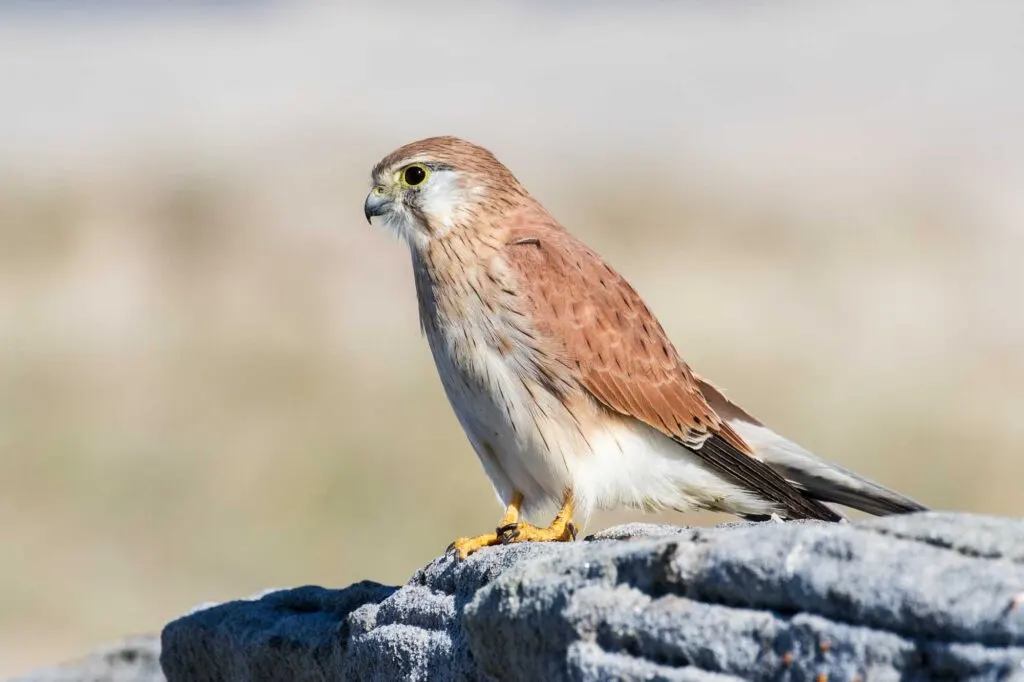
Halfway through animals that start with N, we’re looking at native raptors of Australia and New Guinea.
Their name comes from the color on their wings and back, which is a specific red-brown.
Nankeen is a type of cloth with the same color scheme, widely popular during the eighteenth and nineteenth centuries.
Northern Naked-Tailed Armadillo
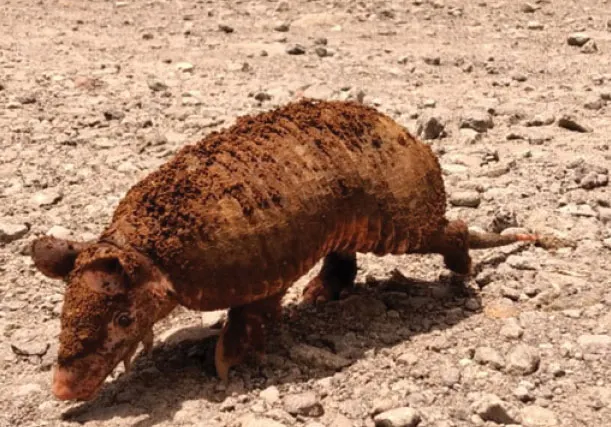
Among the animals that start with N, the northern naked-tailed armadillo is special because it’s one of the two species of armadillo found outside South America.
They like to move via underground channels and consume ants and termites, which are readily found there.
Northern River Terrapin
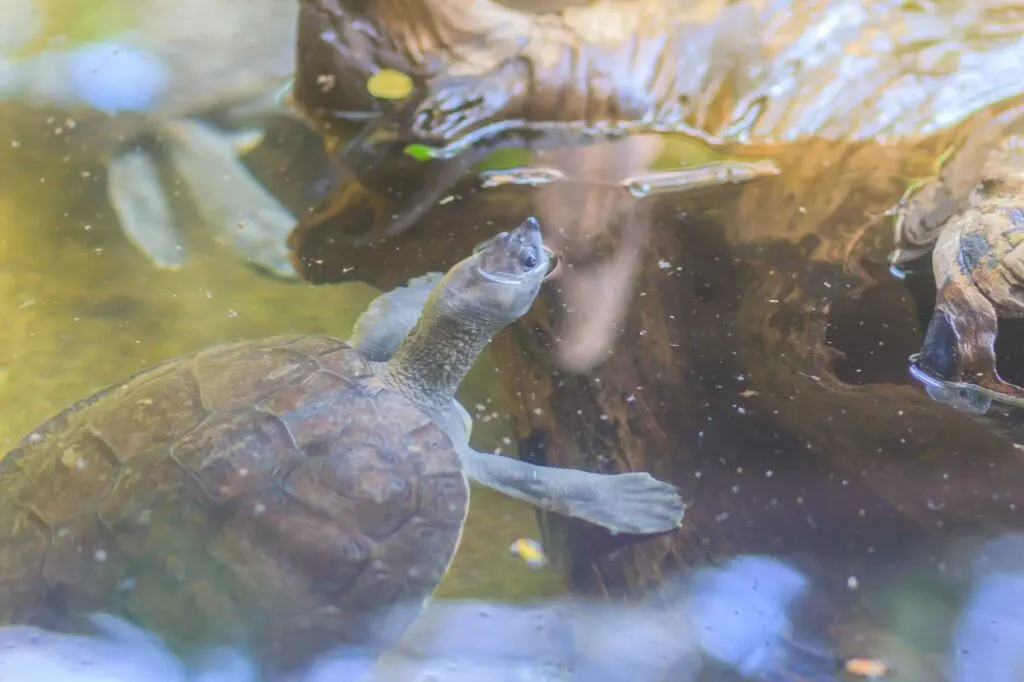
These are critically endangered Southeast Asian turtles. They have the smallest, sweetest face.
Northern River Terrapins are one of the largest freshwater turtles in Asia. The upper shell alone is 39 pounds, and the length amounts to 1.9 ft.
Northern Cricket Frog
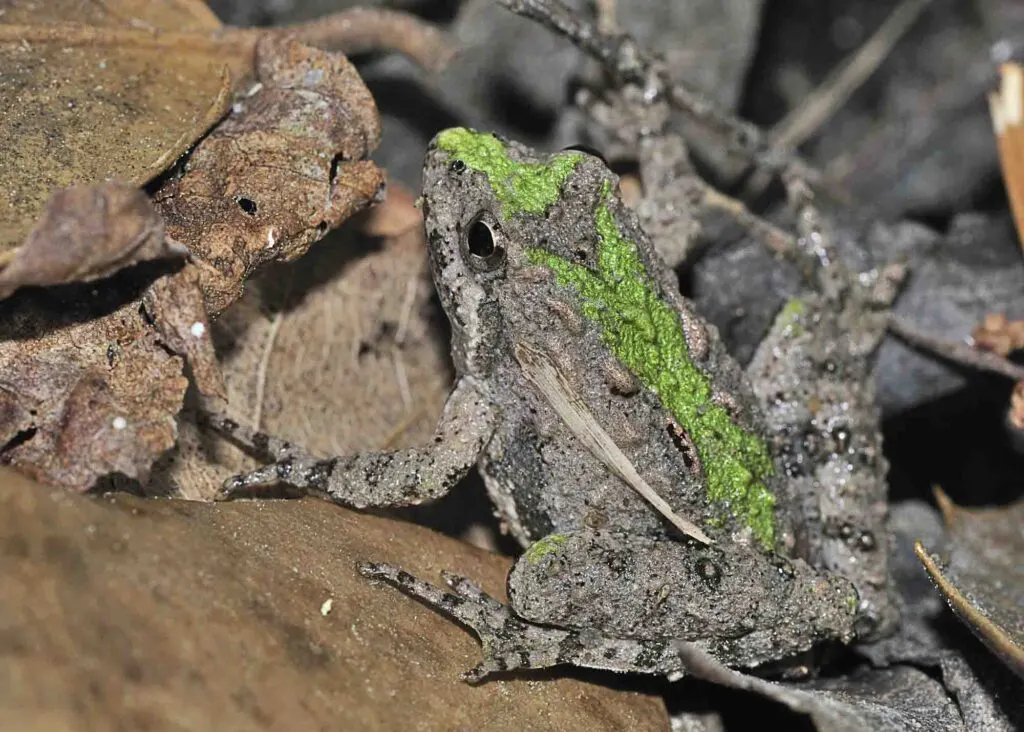
When we say northern cricket frogs are small, you might think we’re exaggerating.
Except, they really are small, not even 1.5 inches at max. The most commonly found ones are barely 0.75 inches. They survive on smaller aquatic insects and crickets.
Neblina Uakari
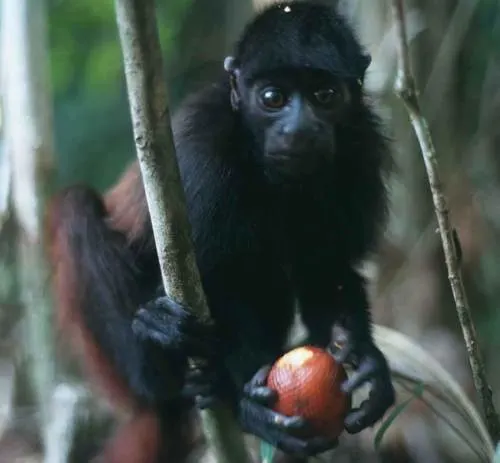
Uakaris are a species of monkeys with brown furs and red bodies.
Neblina uakaris are different in that they have blackheads and black fur. They look like gorillas, except they’re smaller. They weigh about 6 pounds at most and are about 1.47 ft.
Nurse Shark
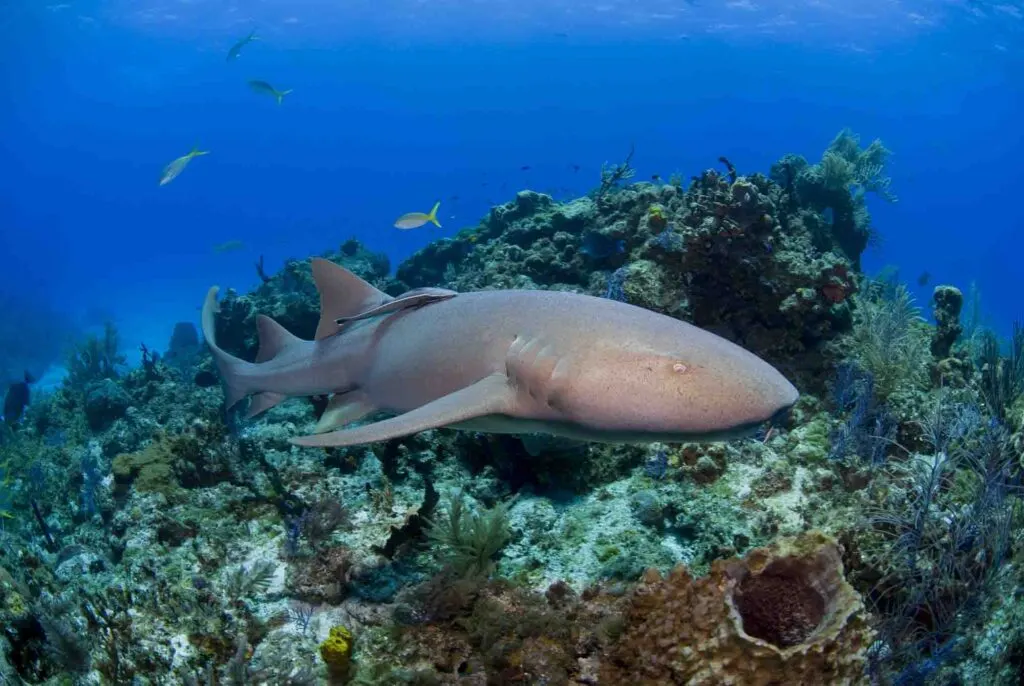
Sharks are one of the species you don’t expect to have the Vulnerable status on the IUCN Red List. Yet, here are nurse sharks.
They’re about 14 ft in size, slow movers with a penchant for the bottom of the sea.
North American Beaver
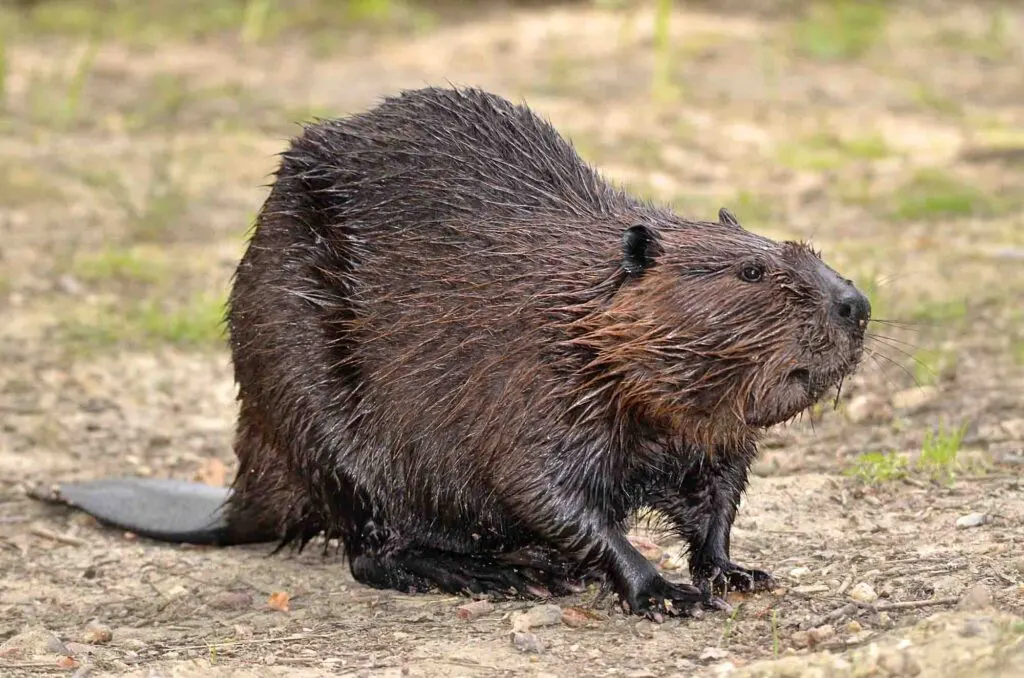
One of the two species of beavers left in the world, they have orange teeth. In North America, they’re the largest rodent species to exist.
They build dams and lodges to live, changing their habitat according to their liking. Their teeth and hands play a key part in helping them build their home.
New England Tree Frog
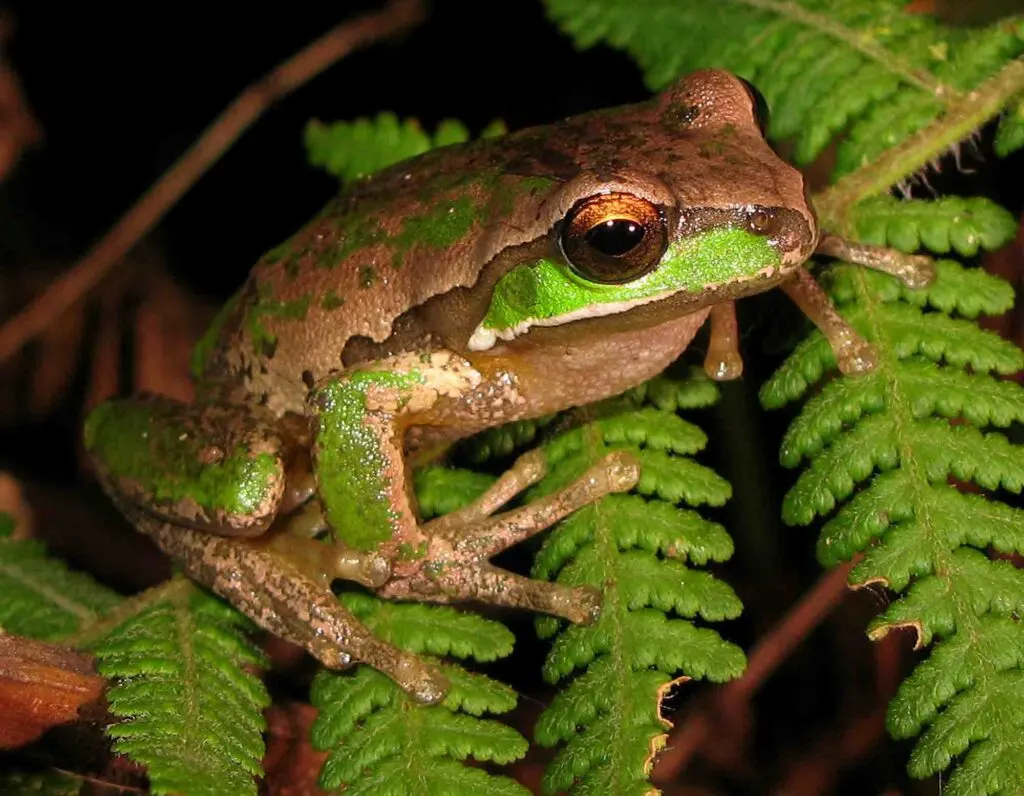
These New England tree frogs naturally have a brown upper area with sparks of green running here and there.
They’re insect consumers by nature. However, some adult tree frogs might even eat other frogs if they’re smaller than them.
North Sulawesi Babirusa
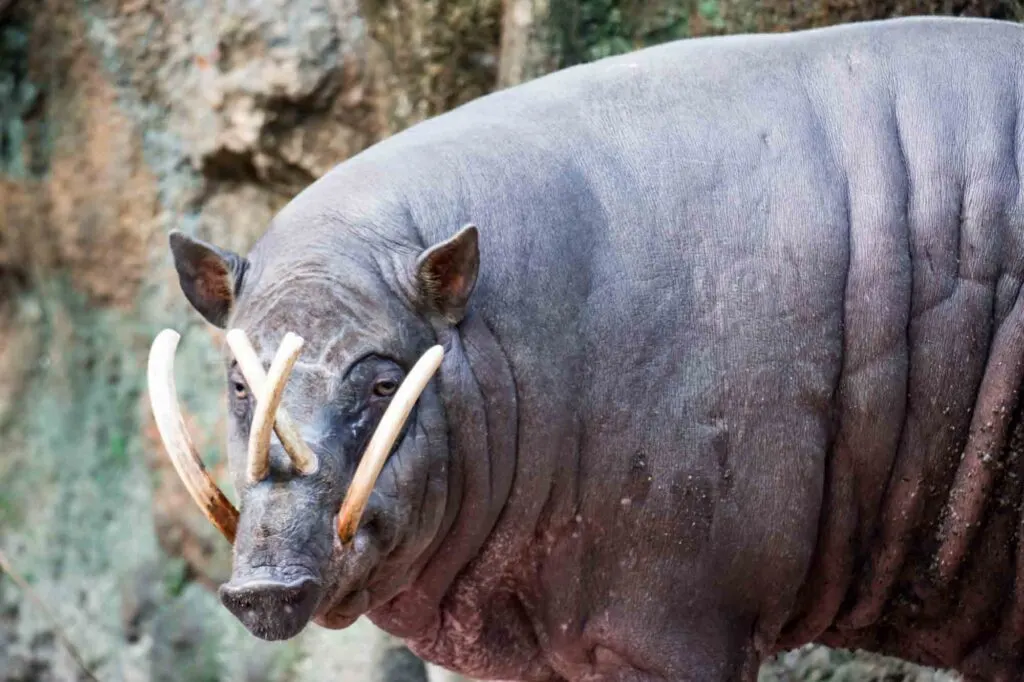
Native species of Sulawesi, the babirusa have similarities to pigs, the male of the species has three large tusks which curve upward.
At first glance, you may think they have a horn on their head. In Malay, babirusa means pig-deer, which is a reference to their antler-appearing tusks.
Natal Green Snake
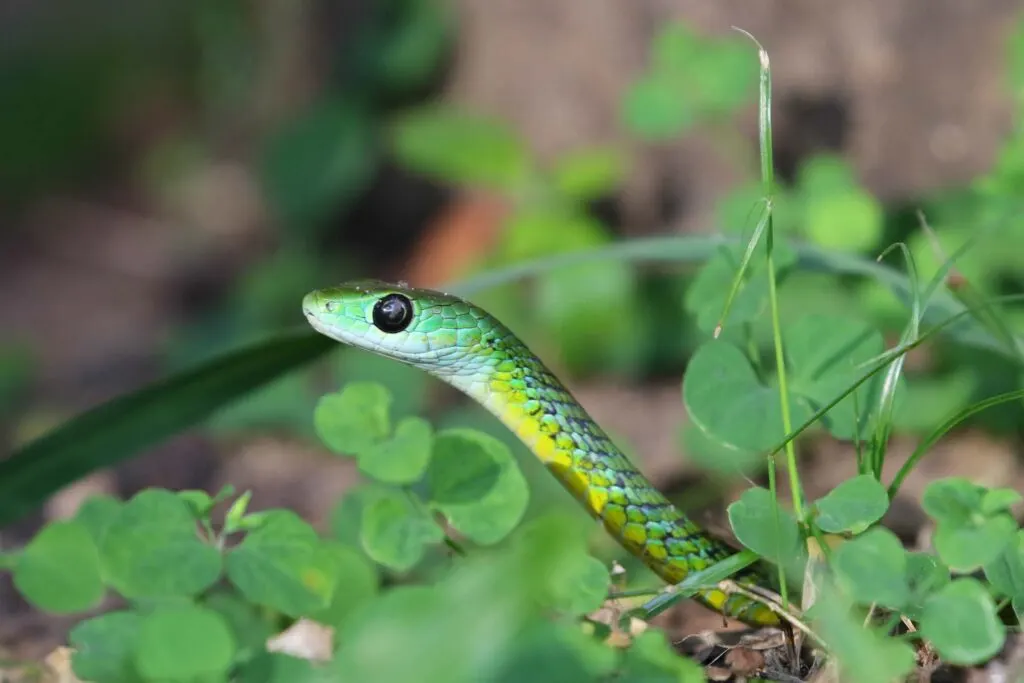
Among the animals that start with N, we can never leave out the majestic Natal green snake.
They’re so pretty with the vibrant green color that they come off as far less intimidating in reality – which is fine since they don’t have fangs or venom, relying on swallowing small animals.
Animal Alphabet List
Animals With N
So, how did you find this list of animals that start with N? We hope you enjoyed it! Oh, and please share it with your friends on social media.
Are we missing any animals beginning with N? Drop us a comment below, and we will update this list!

Bclp
Thursday 1st of September 2022
Northern White Rhino
Caroline
Tuesday 30th of August 2022
Did you mention nutria ?
Scott Carlton
Monday 29th of August 2022
The nene in Hawaii
Lynn Beaird
Sunday 28th of August 2022
Nuthatch
Jason Lambert
Sunday 28th of August 2022
Northern copperhead